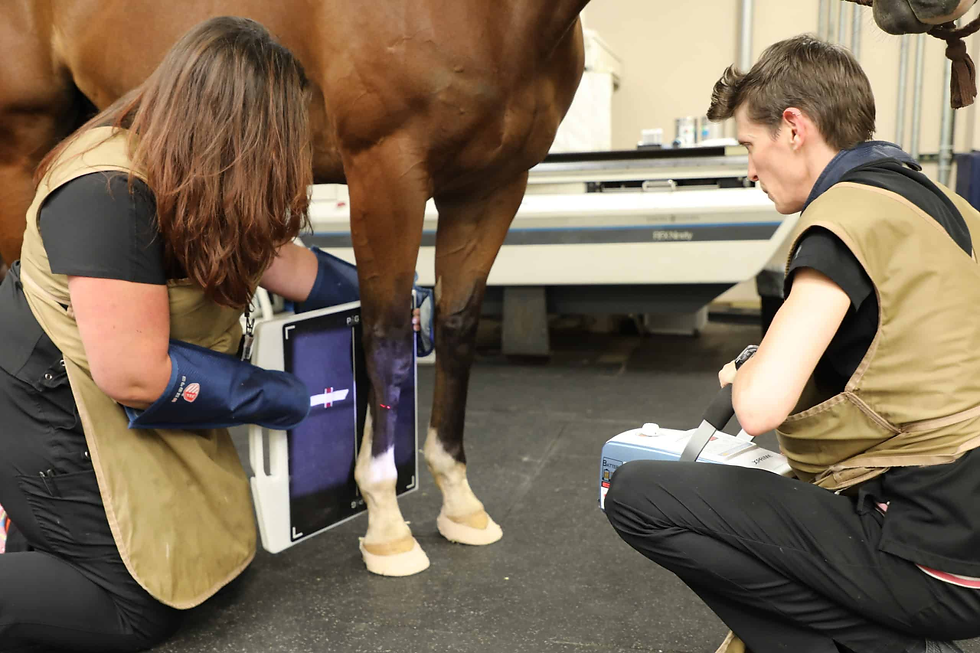Understanding the "Equine Pain Face"
- info046189
- 3 days ago
- 2 min read
Spotting the silent signs of discomfort in your horse
Horses are masters at hiding pain. As prey animals, they’ve evolved to mask signs of discomfort in order to avoid appearing vulnerable — which means that recognising when your horse is in pain isn’t always easy.
We often talk to owners about something called the “Equine Pain Face.” This is a subtle but important set of facial expressions and body language cues that can help you spot when your horse is hurting, even before lameness or other clinical signs appear.
What Is the Equine Pain Face?
The Equine Pain Face refers to a combination of specific facial expressions horses tend to display when they are experiencing pain. These signs were first formally studied in relation to post-surgical pain, but we now recognise them as useful indicators in many situations — from colic and gastric ulcers to orthopaedic pain or laminitis.
Recognising these subtle cues allows us to intervene earlier, offer better pain relief, and ultimately improve welfare.
Key Signs of the Equine Pain Face
Here are some of the most commonly observed features:
1. Tense or Fixed Ears
Rather than flicking or reacting to the environment, the ears may be:
Held stiffly back or sideways
Less mobile than normal
Flattened or pinned in more serious pain
2. Orbital Tightening (Squinting Eyes)
A horse in pain may:
Partially close their eyes
Have more visible wrinkles around the eyes
Appear to be frowning
3. Tense or Flattened Nostrils
Instead of their usual soft, rounded shape, the nostrils may:
Appear tight, narrow, or drawn
Be slightly flared, especially at rest
4. Tightening of the Muzzle or Lips
Lips may be pressed together firmly
Muzzle can appear wrinkled or drawn
Corners of the mouth may appear tense or strained
5. Head Position and Tension
The horse may hold their head slightly lower
Facial muscles appear tight
Lack of normal curiosity or alertness

Why It Matters
Pain doesn't always show up as lameness or obvious distress. Horses may still eat, move, and behave "normally" — especially in the early stages of discomfort. That's why it's so important to watch for small changes, particularly in their face and general demeanour.
By recognising these signs early, you can:
Seek veterinary advice before a problem worsens
Prevent chronic pain or behavioural issues
Improve your horse’s quality of life
Tailor your management, training, or tack to reduce discomfort
When Should You Be Concerned?
If you notice your horse consistently displaying features of the pain face — especially when at rest or during routine handling — it’s time to get in touch. This is particularly true if it's accompanied by:
Reluctance to be tacked up or ridden
Changes in performance or attitude
Weight shifting, pawing, or general dullness
Reduced appetite or lying down more than usual
Tip: Take Photos or Videos
If you're unsure whether your horse is showing signs of pain, take a few clear photos or short videos when they are at rest. Sometimes the changes are clearer when you look back — and it’s also helpful for us as vets to assess what you're seeing at home.




Comments